* No significant snow expected through the weekend.
* Temperatures run 5-10 degrees below average this week.
* Weak clippers capable of a coating to an inch Wednesday, again Thursday.
* More significant snow expected early next week, potentially "plowable" Monday-Tuesday of next week.
* Potential for bitter cold the latter half of next week, possibly rivaling the bitter outbreak we endured in early December.
A Respectable Snowman. That's Heidi Rusch, my good friend on the left, with Aja, Skye and Kelley - visiting from Florida, where snowmen are pretty rare. 2-5" of new snow fell up north over the weekend, this photo taken on West Fox Lake near Crosslake, where snowmobile trails are in much better shape now.
Parade of Clippers. The models are hinting at a light (nuisance) snow on Wednesday, anywhere from a coating to an inch, maybe 2" in a few towns. A more significant snowfall is possible early next week, possibly enough to shovel and plow, along the leading edge of much colder air predicted for the middle of next week.
Next Significant Snowfall? It's early (I should put that disclaimer in front of every forecast), but guidance is pretty unanimous in printing out a "few inches" Monday-Tuesday of next week, the main storm passing well south of Minnesota, but an "inverted trough" of low pressure rippling north into Minnesota may produce an extended period of light to moderate snow - probably plowable and shovelable. There I go, making up words again. Sorry - brain freeze.
120 Hour Snowfall Prediction. Based on the GFS model (which goes out further into time), the best chance of an inch or two in the coming days will probably come south/west of the Minnesota River - far more significant snow amounts downwind of the Great Lakes, the result of "lake effect" snows.
What Is Going On In Arkansas? Scientists are still scratching their heads, trying to understand what natural phenomenon might cause over 1,000 birds to fall out of the sky at once. Hail? A lightning strike? What makes the event even more unusual is a report of hundreds of thousands of dead fish washing up on a lake roughly 100 miles away. Sounds like something (creepy) out of a Stephen King novel. The U.K. Guardian has more details
here. A meteorologist at KATV-TV in Arkansas has his own theory of what may have happened
here. Another angle on the story from mediaite
here. Yes, it is all a bit freaky. My theory? Fireworks on the ground startled the birds, which collided in mid-air - but my confidence level for that explanation is pretty low.
2010: Warmer & Wetter. For the Twin Cities 2010 was 2.7 degrees F. warmer than average (in spite of our Nanook December) and significantly wetter than average, statewide. A map showing precipitation departure from normal is
here. Bill McAuliffe from the Star Tribune has a good
overview of 2010 here, touching on the "new normal" and how the rolling, 30 year averages are changing to reflect the warming trend evident in the data since 1975.
A Snow-Filled Glimpse Of America's Future. From a
story in the San Francisco Chronicle, one that should make Minnesota's many snow-lovers happy: "
Welcome to the New Normal." Those words should be displayed at New York's airports as a welcome to bedraggled travelers during the Northeast's latest "snowpocalypse." Why? Because the Big Apple's much-lamented paralysis this week is a critical cautionary tale for everyone. The episode warns us about the kind of thing that's likely coming to the rest of America as we now willfully mix three toxic problems.The first of those is global climate change. Though no single mega-storm is the fault of climate change, scientists agree that weather - including snow patterns - will become more intense as the planet's ecosystem is transformed by human-produced pollution. So while New York's near-record snowstorm may not be the direct result of unbridled carbon emissions, powerful storms like it will undoubtedly be more frequent thanks to our head-in-the-sand attitude toward the environment."
7th Person Dies After New Year's Tornadoes. From an
article at USA Today: "
Shaken residents spent New Year's Day sifting through the wreckage wrought by tornadoes that touched down in several states on the last day of 2010, killing seven people and injuring dozens of others. Six people — three in Missouri and three in Arkansas— died Friday as tornadoes fueled by unusually warm air pummeled the South and Midwest. A seventh person who was injured Friday in Missouri died Saturday, said Bruce Southard, the chief of the Rolla Rural Fire Department."
Severe Flooding Down Under. Queensland, in northeastern Australia, is still in the midst of historic flooding, affecting an area larger than the state of Texas. At least 9 deaths have been blamed on the muddy waters, thousands of people have been forced from their homes. More on the flooding fromt the New York Times
here. The Telegraph has another perspective on the scope of the flooding, and the suffering it's producing
here. Dr. Jeff Masters has more details on the flooding in his Wunderblog
here.
River Rage. Why Iowa's Flood Risk is Rising. The Des Moines Register has an excellent article about the growing flood threat for Iowa. Minnesota is at equal risk of (spring) flooding this year, and it appears the risk of flash flooding is also growing over time. From the
article: "
Changes in Iowa's weather patterns, landscape, cities and farms have rendered some of the state's most trusted flood prevention safeguards outmoded and inadequate, a review by The Des Moines Register shows. That includes the state's system of dams - including Saylorville upstream from Des Moines - which were designed to meet climate conditions and a lay of the land that some scientists say haven't existed for decades. That leaves Iowans, their homes and their businesses increasingly at risk for the sort of devastating floods that ravaged the state in 1993, 2008 and again last year, causing damage in the billions of dollars."
Plenty Of Snow. The latest snowfall
map, courtesy of NOAA and Ham Weather, shows 8-15" on the ground across the metro, but over 30" over much of north central Minnesota.
Monday Morning Lows Up North (courtesy of our partner, Weather Bug):
KFOZ - - currently -33 degrees F (33 below zero) - - Municipal Airport in Bigfork, MN
KINL - - currently -30 degrees F (30 below zero) - - Falls International Airport in International Falls, Minnesota, USA (the low was -32 at International Falls).
KCQM - - currently -29 degrees F (29 below zero) - - Cook Municipal Airport in Angora, MN
KXVG - - currently -27 degrees F (27 below zero) - - Municipal Airport in Longville, MN
BNSLV - - currently -27 degrees F (27 below zero) - - WeatherBug site at Bugonaygeshig School in Bena, MN
Interesting camera view from the WeatherBug camera at this school shows DEEP snow-pack and clear skies, perfect ingredients for maximum radiational cooling overnight into this morning:
Too Much Tech? Feeling overwhelmed by the incessant proliferation of technology, megabytes, megapixels, tweets, posts and e-mail spam? Me too. Seems we're not alone. This plea for sanity captured my attention. Time to get down off the technology-treadmill, but that's easier said than done (especially when you're running a tech company).
Demolition Derby. No, fender benders aren't funny, but
this YouTube video sums up the utter futility of trying to drive on black ice. This clip was captured in Colorado Springs - set to music, rated PG for language. A cautionary tale about the perils of driving on glaze ice.
Surprisingly Slick. I'm a bit amazed by how little snow it takes to ice up area highways, especially when temperatures are well below freezing (and the chemicals put down by MnDOT don't work nearly as effectively as when the mercury is 25 or warmer). Just under an inch of snow fell at MSP, 2" at St. Cloud.
 Paul's Conservation Minnesota Outlook for the Twin Cities and all of Minnesota:
Paul's Conservation Minnesota Outlook for the Twin Cities and all of Minnesota:
TODAY: Some sun, better on area highways, feels like -10. High: 9
TUESDAY NIGHT: Cloudy with flurries or light snow late. Low: 3
WEDNESDAY: Light snow possible from the next clipper, coating - 1"+. Slick. high: 15
THURSDAY: Yet another clipper, chance of light snow or flurries. Colder. High: 8
FRIDAY: Some sun, "character-building". Low: -3. High: 12
SATURDAY: Partly sunny, still brisk. High: 19
SUNDAY: Mostly cloudy, flurries arrive late. High: 17
MONDAY: Few inches of snow possible. High: near 20

The "Dark Ages"
Midshipmen at the U.S. Naval Academy have a name for the cold, dark days of January. They call this the "dark ages"; the expression is fitting. Many of us are suffering through a post-holiday funk and hangover: credit card bills, buyer's remorse, wind chill fatigue - spring break seems SO far away.
There's hope in the extended outlook: by the end of January temperatures begin to trend upward again (for the first time since late July). Hey, the Boat Show kicks off January 20! This may wind up being the coldest, snowiest winter for Minnesota since '96-97. Hopefully that won't mean a rerun of 1997's severe flooding on the Red River, but officials are increasingly concerned about the potential for spring flooding.
Skies try to clear today behind Monday's clipper - the next cold wrinkle aloft capable of another inch or two of powder Wednesday. Heavier snow accumulates early next week as much colder air approaches by mid-month.
I have new respect for the pioneers who settled here in the 1800s, before central heat, Thinsulate and cable TV. How did they do it? Mind over matter, and an almost supernatural belief that better days were on the horizon. The dark ages will end - soon.
Have Scientists Discovered How To Create Downpours In The Desert? I did a double-take after stumbling upon this
article from the U.K.'s Daily Telegraph. Man-made weather, conjuring up downpours and floods...in the deserts of Of Abu Dhabi?
"For centuries people living in the Middle East have dreamed of turning the sandy desert into land fit for growing crops with fresh water on tap. Now that holy grail is a step closer after scientists employed by the ruler of Abu Dhabi claim to have generated a series of downpours. Fifty rainstorms were created last year in the state's eastern Al Ain region using technology designed to control the weather."
Climate Change: Next Security Threat. From an
op-ed in Politico: "
The Defense Department calls climate change a destabilizing influence and “threat multiplier.” There is no better example of climate change as a destabilizing force than what happened in Pakistan last year. More than one-fifth of Pakistan was flooded by torrential rains and insurgents have pounced on the chaos-created opportunity to turn Pakistan into a breeding ground and safe haven for terrorist activity."
 Climate Change Blamed In Weather-Related Insurer Costs
Climate Change Blamed In Weather-Related Insurer Costs. From an
article at Canada's ctv.com: "
Natural disasters cost the global insurance industry about $37-billion (U.S.) last year, a new calculation shows, putting 2010 among the top six "loss-intensive" years since 1980. Munich Re, the largest reinsurer in the world, cited 950 natural catastrophe with overall losses of $130-billion. Of those losses, Munich Re reported, $37-billion was insured. The reinsurer was not suggesting that earthquakes were the result of climate change, but said that weather-related events, such as storms and floods, accounted for 90 per cent of the total 950. "The overall picture last year was dominated by an accumulation of severe earthquakes to an extent seldom experienced in recent decades," the company said in its report. "The high number of weather-related natural catastrophes and record temperatures both globally and in different regions of the world provide further indications of advancing climate change."
Climate Change Debate Treacherous For All Sides. From a timely
article at boston.com: "
With the federal government set to regulate climate-altering gases from factories and power plants for the first time, President Obama’s administration and the new Congress are headed for a clash that carries substantial risks for both sides. While only the first phase of regulation takes effect today, the administration is on notice that if it moves too far and too fast in trying to curtail the ubiquitous gases that are heating the planet, it risks a congressional backlash that could set back the effort for years. But the Republicans in Congress, emboldened by gains in the midterm elections, could also stumble by moving too aggressively to handcuff the Environmental Protection Agency, provoking a popular outcry that they are endangering public health in the service of their well-heeled patrons in industry."
Review: The Silver Lining of Climate Change. From an
article in the Edmonton Journal: "
An ancient Chinese curse says, “May you live in interesting times.” This utterly absorbing book, subtitled Four Forces Shaping Civilization’s Northern Future, forecasts interesting times indeed, especially for the eight nations that comprise the Arctic Rim countries: Canada, the U.S., Russia, Iceland, Greenland (Denmark), Norway, Sweden and Finland. Laurence C. Smith, a scientist and professor of geography and earth sciences at the University of California Los Angeles, argues that as global warming progresses, sea levels will rise, flooding coastal plains and driving a growing world population inland, just as climate change turns the rich agricultural areas of countries that grow most of the world’s food into desert. But the same forces that cause this will result in a northward shift in population and agriculture and a raw-materials bonanza — oil, natural gas, minerals and water resources — for Arctic Rim countries as sea ice recedes to allow easy navigation of northern transportation routes."
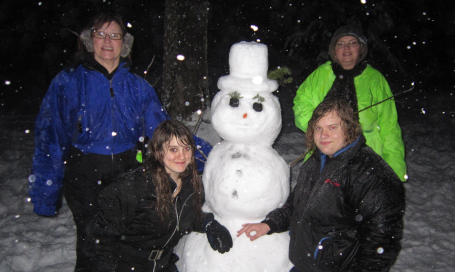
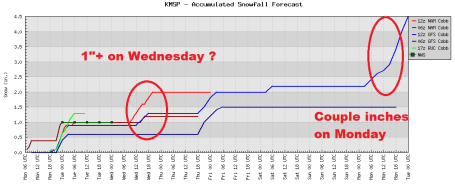
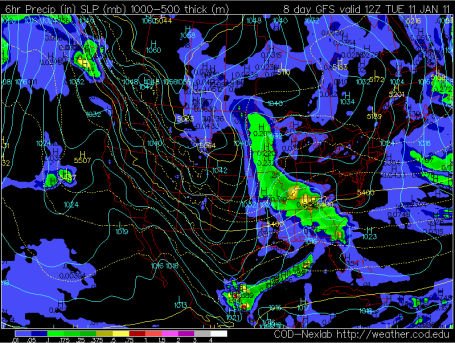
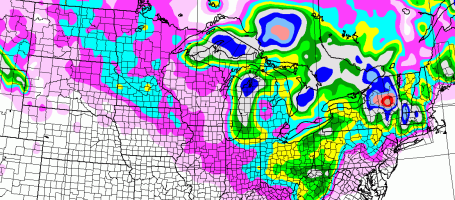
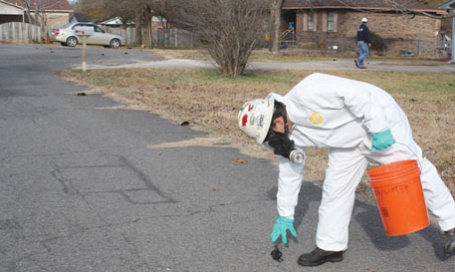
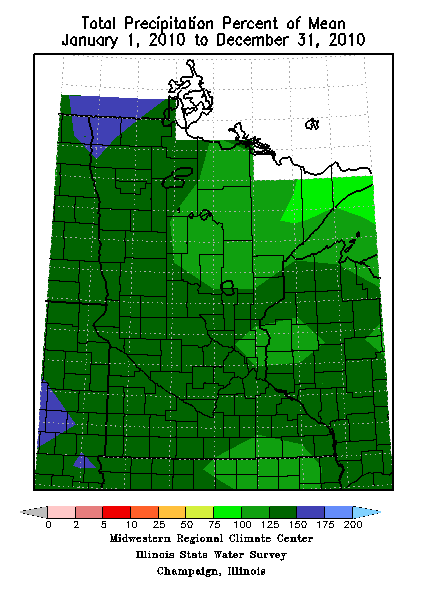

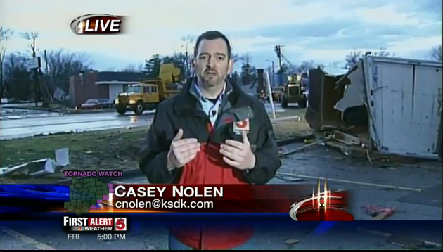

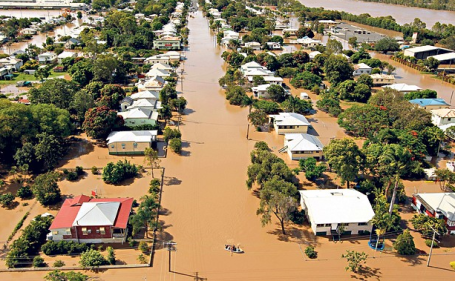
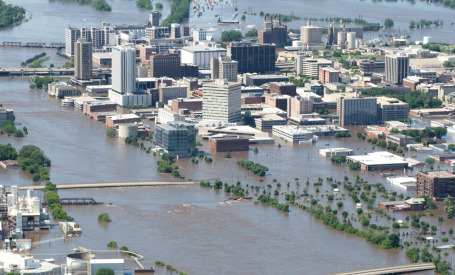



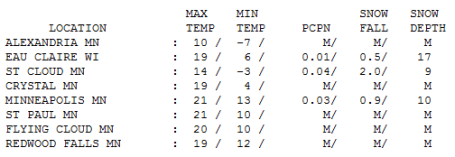


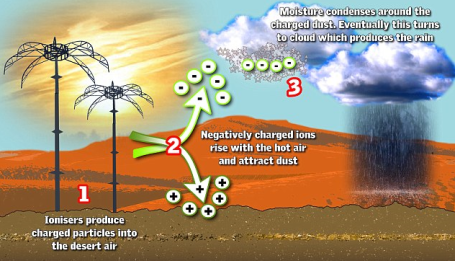
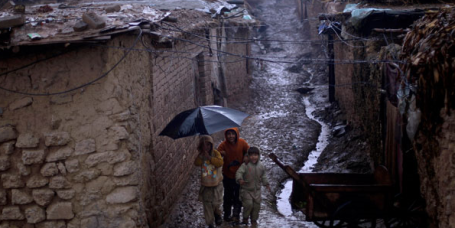



No comments:
Post a Comment